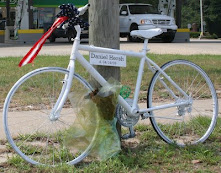In rooting around on this topic, I came across some papers written by a hired gun PhD. One in particular stands out.Thanks to Bruce for sharing this.
The author’s key points, some of which are commonly known: (the strength of his argument is how he quantifies and ties it all together)
-how even legal speeds can allow overdriving the distance that one is capable of seeing and avoiding for a pedestrian
-the effects of higher speeds at night and our ability to process what we see
-the role that age plays – those of us aged 50 and up detect pedestrians at substantially shorter distances than younger drivers (he quantifies it)
-how what we can process is zero sum- attention given to one thing comes at the expense of others
-the role of auto lighting: it’s designed to keep glare down for oncoming motorists, at the expense of spotting other things like pedestrians
-what our eyes see vs what the brain processes, especially at night; the role of contrast
-how we as pedestrians so badly under estimate a drivers ability to see us
-especially at night, one’s choice of where to cross a road is a critical factor in whether a driver will see you
-especially at night, one’s choice of clothing is a critical factor
-adverse factors such as rearview mirror posts, smoking, dirty headlights
-the role of alcohol and fatality rates (your risk of a crash after drinking and then walking is slightly higher (5x) than getting behind the wheel (4x)!) (importantly, it doesn’t take a legally defined staggering drunk to greatly increase ones risk)
So many things conspire to force both driver and walker into a death trap.
Last SSDD was in 2010
Please visit www.SDCC.info, the Shore Drive Community Coalition website.
SSDD2010 July 17th
Thanks to everyone who participated.
With your help, we've made sharing Shore Drive a little safer.
+ blog starts below +
SSDD2010 July 17th
Thanks to everyone who participated.
With your help, we've made sharing Shore Drive a little safer.
+ blog starts below +





